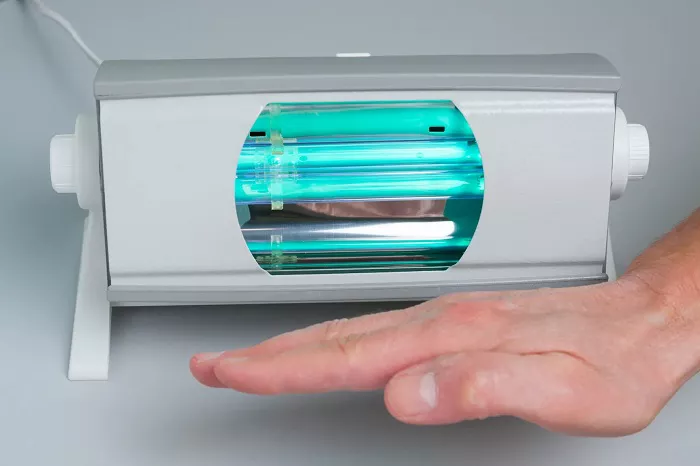Managing psoriasis often feels like a constant battle. Medications like biologics and immunosuppressants can help reduce flare-ups, but they come with side effects such as fatigue, joint pain, and a higher risk of infections. Lifestyle changes like healthy eating and stress management can also help, but they may not fully prevent symptoms. A new study published in JAMA Dermatology suggests a promising alternative: home-based light therapy.
The study, conducted across 42 dermatology practices in the U.S., compared the effectiveness of light therapy (also called phototherapy) in clinical settings versus at home. Researchers found that both methods delivered similar results, but patients using home-based therapy were more likely to stick to their treatment plan. Additionally, home therapy eliminated the cost and inconvenience of frequent clinic visits.
“Home-based phototherapy was less burdensome for patients and had better adherence compared to office-based treatment,” said Dr. Joel Gelfand, the study’s lead author and director of the Psoriasis and Phototherapy Treatment Center at Penn Medicine. “This makes a strong case for expanding access to home-based options.”
How Light Therapy Works
Light therapy uses specific wavelengths of ultraviolet (UV) light to reduce inflammation and slow the overproduction of skin cells, a key issue in psoriasis. The most common types are UV-A and narrowband UV-B. According to Dr. Lisa Rhodes, a dermatologist at Westlake Dermatology in Austin, Texas, narrowband UV-B is particularly effective for psoriasis, atopic dermatitis, and vitiligo.
“Patients typically stand in a light box for a few seconds to minutes, two to three times a week,” Dr. Rhodes explained. “The exposure time increases gradually. There are also handheld devices for smaller areas like the scalp, hands, or feet.”
The National Psoriasis Foundation (NPF) notes that UV-B light, which is also found in natural sunlight, penetrates the skin to slow the growth of affected cells. Unlike sunlight, narrowband UV-B can target specific areas with high precision, making it ideal for localized psoriasis.
Study Findings: Home vs. Clinic
The study, called the Light Treatment Effectiveness (LITE) trial, involved 783 participants aged 12 and older, most in their 30s and 40s. All had plaque or guttate psoriasis and were not resistant to previous phototherapy treatments. Half used home-based narrowband UV-B devices for 12 weeks, while the other half received treatment in a clinic.
After three months, 60% of participants in both groups achieved clear or mostly clear skin. However, the home-based group showed several advantages:
- They were less likely to start oral or biologic treatments during the study.
- They adhered to their treatment plan more consistently.
- They saved money by avoiding transportation costs and insurance co-pays.
- They spent slightly less time on treatment overall.
- They used topical treatments less frequently than the clinic group.
“This study confirms that home-based phototherapy is just as effective as in-office treatment for plaque and guttate psoriasis,” said Dr. Gelfand. “It’s especially beneficial for patients in rural areas who may struggle to access dermatology clinics regularly.”
Challenges and Limitations
Despite its benefits, home-based light therapy has some limitations. The devices used in the study cost around $6,000, and insurance coverage varies. Smaller, more affordable devices are available, but they require longer sessions, which may affect consistency.
Additionally, narrowband UV-B therapy may slightly increase the risk of skin cancer. While the benefits generally outweigh the risks for most patients, those with a history of skin cancer or a strong family history may not be good candidates.
For many psoriasis patients, home-based light therapy offers a convenient, effective, and cost-saving alternative to clinic visits. “Phototherapy, whether at home or in the office, delivers excellent results,” said Dr. Gelfand. “We need to make these safe and effective options more accessible to patients.”
Related topics:
- Can The Heart Heal Itself? Scientists Reveal Surprising New Findings
- Michigan Tragedy Highlights Urgent Need For Oversight Of Hyperbaric Oxygen Therapy
- Could Psychedelics Offer New Hope For Mental Health In Autistic Individuals?


